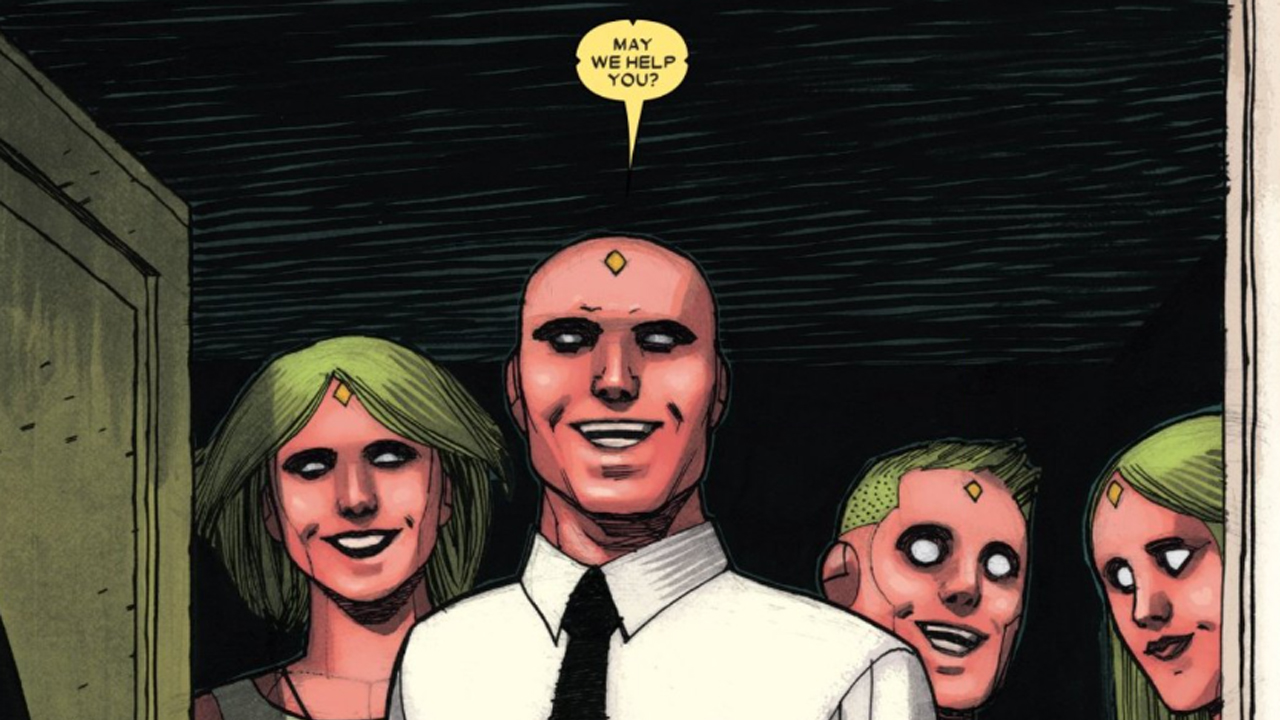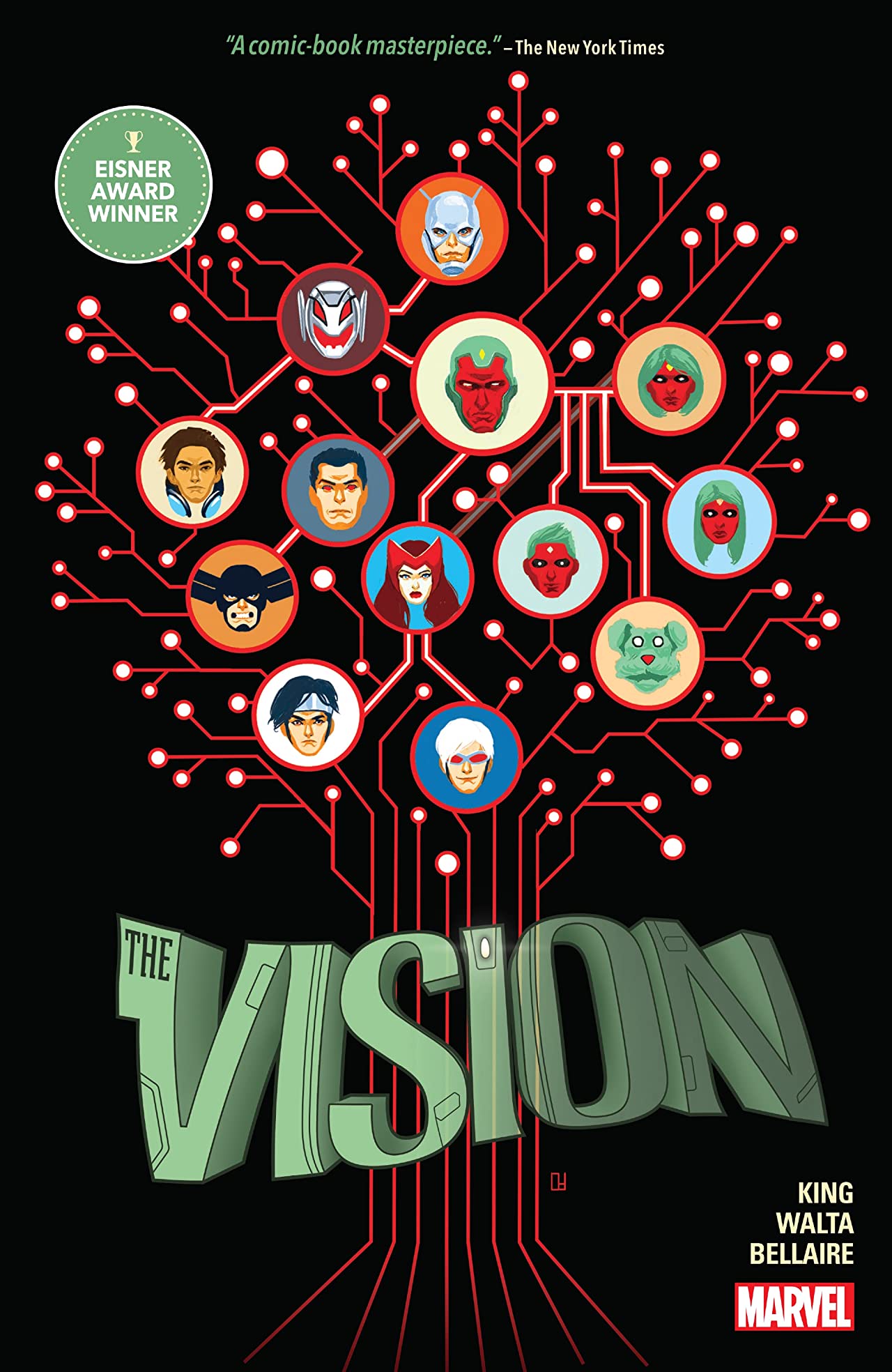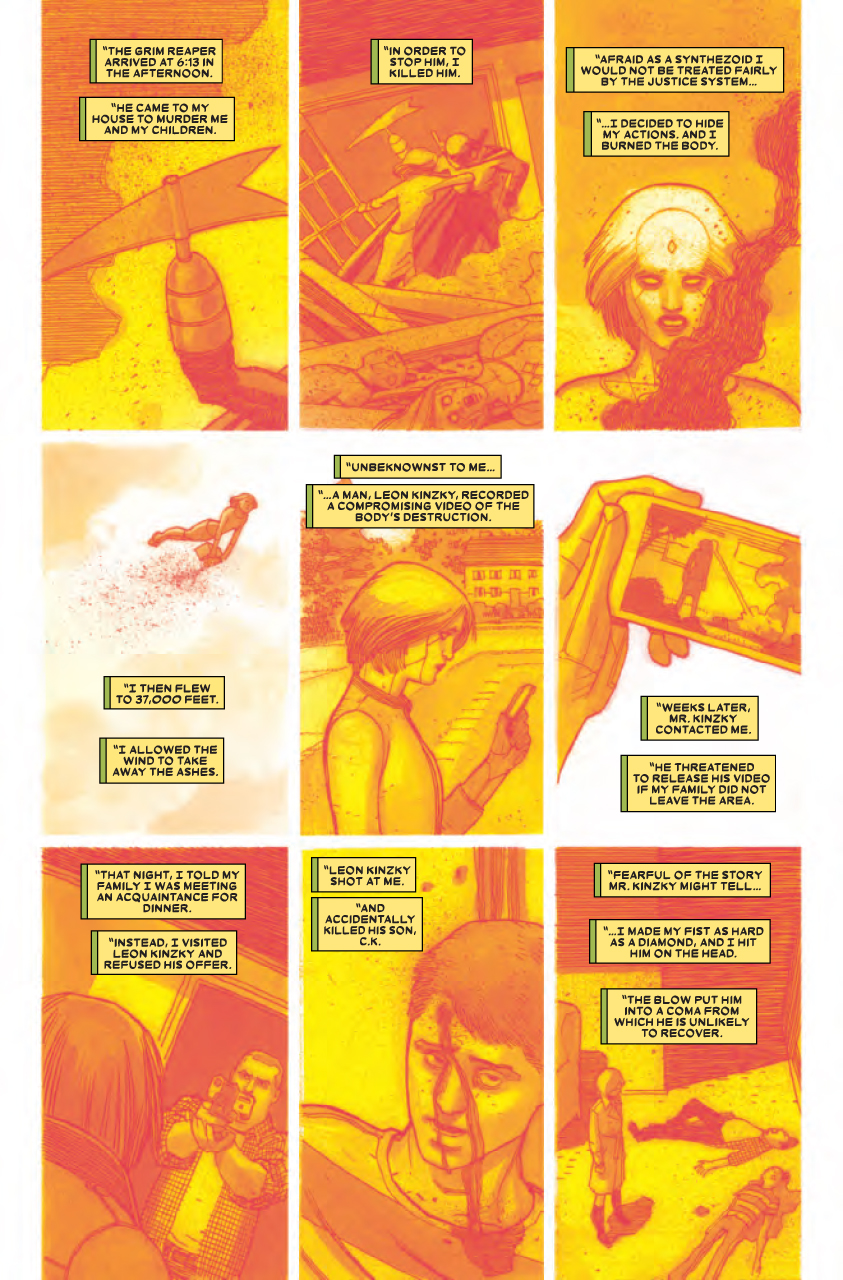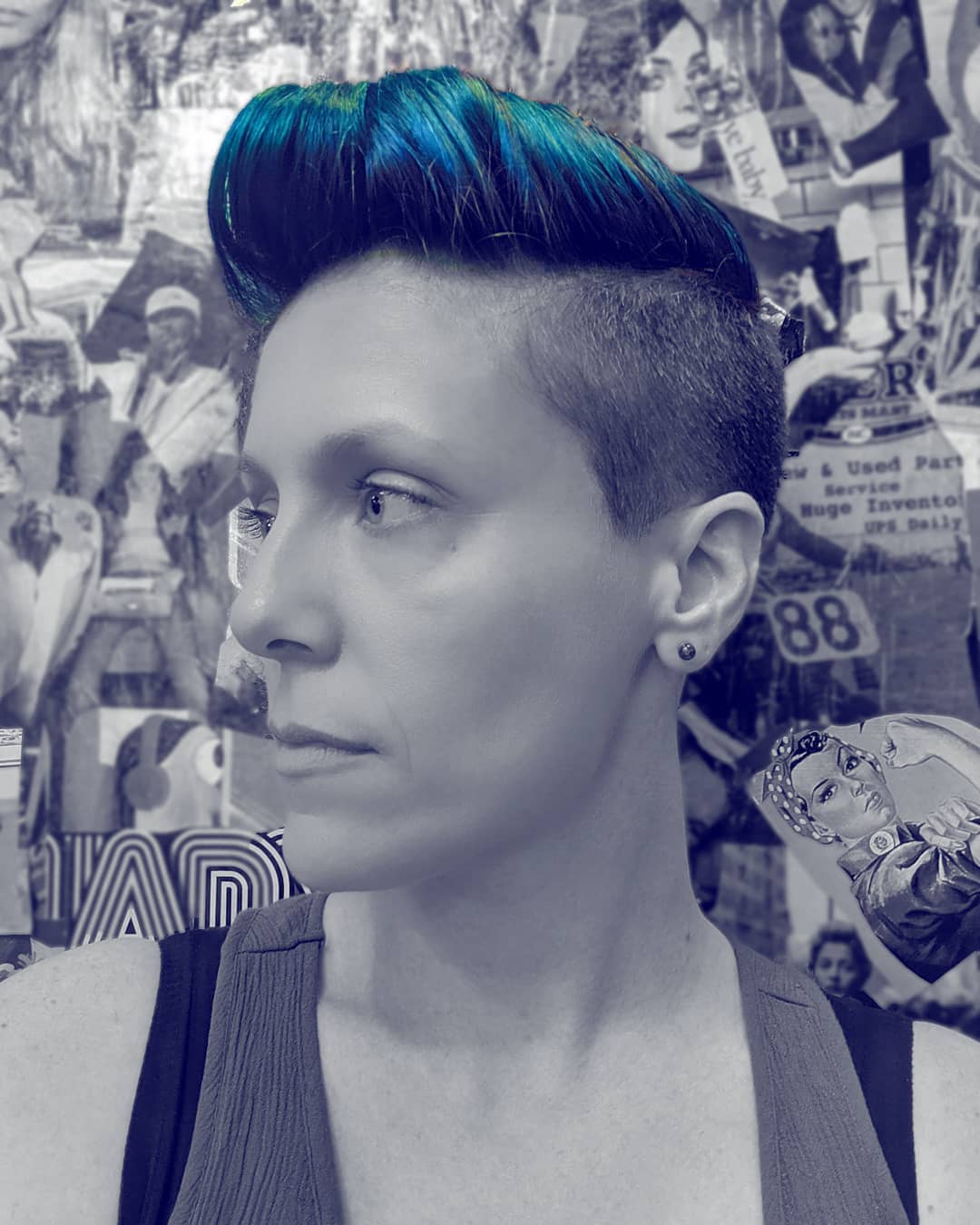Best Shots review: The Vision a brilliant page-turner
Got WandaVision on your mind? We've got your vision with the award-winning The Vision series

When Vision and his synthesized family greet their new neighbors with vacant eyes and almost-human smiles, something feels foreboding from the first issue.
Written by Tom King
Illustrated by Gabriel Hernandez Walta and Michael Walsh
Colored by Jordie Bellaire
Lettered by Clayton Cowles
Published by Marvel Comics
'Rama rating: 8 out of 10
The Eisner Award-winning limited series The Vision, initially launched in 2015, sets Vision in a Washington, D.C suburb with a traditional nuclear family he created. Its singular Rockwellian aesthetic is rumored to have inspired bits and pieces of the Marvel Cinematic Universe's upcoming Disney Plus series WandaVision. While the set is as mundane as any suburb might be, something psychotically Stepford stirs beyond the family's well-manicured yard that is complete with a mailbox that hovers at just the right height.
At the start, Vision promptly welcomes his neighbors into his home, where Virginia (his wife), Viv (his daughter), and Vin(his son), exclaim, "pleasure to meet you," in robotic succession. As the curious neighbors peruse their home, we are treated to panels of Marvel Universe oddities like Captain America's lighter dating back to D-Day, a flying water vase of Zenn-La, and an everbloom from Mount Wundagore. Perhaps like any typical dad, he has memorabilia and trophies from his proudest moments. Yet, the fantastical scale displayed in the Vision home is beyond humanity but mirrored so well.

For the neighbors, it is immediately evident to them (and the reader) that normalcy is hopelessly impossible for Vision. However, that will not stop him from trying. As this family's story unfolds, writer Tom King, artist Gabriel Hernandez Walta, and colorist Jordie Bellaire masterfully leave your insides feeling quite like that floating mailbox while compelling each page turn toward tragedy.
Vision creates a family for himself in one of the most exciting storylines for the character to date. Virginia is made from his former love's brainwaves, Wanda Maximoff, which is a flag as red as their faces. Vin and Viv, the twin teenagers, are a combination of Vision and Virginia's consciousness. While Vision spends his days working for the President, Virginia is a stay-at-home mom to the twins as they traverse public high school with humans. All of them wish to fit in. Vin asks Viv, "Am I normal?" Viv replies that their father requires them to "remain ordinary." To which Vin wonders if that is the same thing. The next 11 issues explore that ironic synonymity.
On the surface, how the family navigates everyday problems like making friends at school, helping the kids with their homework, and a husband working long hours resonates with familiarity. But the synthezoid's bizarre internal processing of that experience peppers in their lack of human experience. Still, King strikes a balance between sincerity and oddity that is endearing as they try so hard to replicate normalcy. The plot takes a swift turn from charming to horror when the Grim Reaper violently attacks Viv. As any parent might, Virginia and Vision would do anything to save their children. The challenge arises when their "anything" is far more potent than what humans could do, unless maybe you are Tony Stark.

The Vision #1 preview


When the violent home invasion leads Vin to behave violently at school, Vision's confrontation with the school’s principal is as tyrannical as it is arrogant. "I have saved this planet 37 times. Each day you live. Each breath you take. Each beat of your heart. Each is due to my actions. 37 times over," he says with superiority.
Get the best comic news, insights, opinions, analysis and more!
The moment is masterfully crafted tragic irony. Despite Vision's mission of humanity, when push came to shove, when his family was threatened, he threatened to subjugate that very thing – becoming the antagonist of his story. The narrative seamlessly unfolds from there, and its emotion, tragedy, and swift pacing hit every note to a satisfying finish. It is brilliant.

Readers can buzz through the series perfectly timed highs and lows and find them exhilarating, particularly in King's novel approach to telling a super-powered story. Like the shawarma end credits scene in Avengers, Vision's backdrop of suburbia and daily routines is a rarely visited perspective for one of the more powerful beings in Marvel's roster. It is in this mundane setting that makes the extreme violence and dark psychological moments tear through the page and hit harder.
What is more, King imbues serious issues like suicide and the potential implications of artificial intelligence into these characters' day-to-day lives and does so successfully. His story is mostly one of resonance, arming the reader with all the emotions they need to be captivated in such catastrophe. Still, a couple of moments read a bit tone-deaf five years later, particularly those featuring hate speech and gun and police violence, especially after the last year. But like Vision's best-laid plans and good faith intentions, one cannot predict the future (even if you can game out a million scenarios). These moments are forgivable, albeit a bit disruptive.
What is less forgivable is Viv's disturbing mutilation at the end of the Reaper's scythe. While the character is one of the only ones to find redemption, the gut-wrenching splash page of her attack came a bit too close to the fridge. That moment could have just as easily featured Vin and been just as impactful. Further, Viv could have acted out in school instead. The Vision's linear, craven determination to be 'normal' comes at a decadently heteronormative cost. While these things are not deal-breakers, they do beg some questions. Were the stark gender representations necessary for this story? Couldn't the Rockwell moments still have been achieved? They could have because the art was just that good.

The Vision #12 preview



Indisputably, Walta's careful, uncomplicated lines and Bellaire's matted colorwork define King's Vision, singularly. Together, their composition and color are blissfully simple. The artwork merges with the narrative with such cohesion, telling the other half of the story by the Vision family's limited body language, contrived facial expressions, and strategic colors. The artwork as a whole, like their big blank eyes, convey a perfect strangeness, but also the necessary emotion to connect with the reader. When the art fuses with the writing like it does here, we see the comics medium's most spectacular creative outcomes.
King does a hell of a job keeping up with the Joneses, grotesquely yet captivating. The entire series is a page-turner that expands the complex possibilities of the Vision character. As we wonder what bits the MCU will pick and choose for Friday's WandaVision premiere, here is to hoping they take the beautiful aesthetic and leave the less progressive ideas on the cutting room floor.
Get up to speed on the Vision and Scarlet Witch's upcoming Disney Plus show with everything you need to know about WandaVision.
Vanessa Gabriel does marketing, communications, and design things by day and comic nerd things by night. She's written comic reviews for over a decade but has opined on the portrayal of Wonder Woman for much, much longer.



